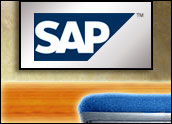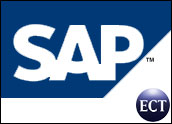
Part 1 of this two-part series looks at the changes in software giant SAP’s management and how they have affected its corporate culture and product strategy.
Having delivered on its goal of moving to a service-oriented architecture, SAP now aims to make use of that architecture as it drives innovation out to the fringes of its sphere of influence.
Co-CEO Henning Kagermann outlined in his keynote at the company’s annual Sapphire conference a strategy to deliver “enhancement packets,” basically mini-applications or functional modules that can be licensed individually and added on to existing SAP software. The idea is that customers can buy the functions they need without a wholesale update of the underlying application.
“We felt we need to add another dimension to this efficiency and flexibility. Because it is not about changing — it is about scaling up profitability. It is about innovating quickly,” Kagermann said. “You just install it technically as easy as a support package. You activate it whenever you need the functionality — for all products of the suite. For NetWeaver as well. So, no upgrades for you in the next years.”
SOA “helps us to connect systems. I think it is not enough. It is just a necessary first step because it is also important that you have access to process steps, to innovation, to practices of other industries,” he added.
A Long Haul
“This is going to be a long haul for SAP,” Dana Gardner, principal analyst at Interarbor Solutions, told CRM Buyer. “This is really a rather monumental undertaking; really a five- to 10-year affair.
“One of the major principles about SOA is that you break down applications as monolithic entities and repurpose them as Web services,” he said. “The mother of all monolithic applications is SAP R3. This is the real poster child for what SOA is designed to tear apart.”
SAP’s service-oriented architecture strategy is a bit of a conundrum, Gardner continued. The company wants to be responsive to its customers and target new areas of opportunity, both of which it accomplishes with the SOA strategy. However, it has a vested interest in maintaining its core ERP (enterprise resource planning) application.
“To me, there’s still significant question marks as to how the company transitions into what we’re seeing as the cloud compute, utility software, Web 2.0 and Software as a Service environments. To fully embrace SOA, you have to break down applications. If SAP decomposes its applications and infrastructure, then whatever it is that SAP provides as a value add is diminished,” he noted.
Despite its apparent embrace of change, SAP has been reticent to embrace one concept that has swept the enterprise application space: on-demand. That’s not to say, however, that SAP is ignoring the concept entirely. It has been working to roll out Business ByDesign, its on-demand software suite aimed at the mid-market.
The On-Demand Paradox
The company, in announcing its first-quarter financial results, also acknowledged difficulty in rolling out Business ByDesign. It delayed the launch and said it wouldn’t reach its customer targets as expected. The news led many to wonder whether the company would abandon the on-demand strategy altogether.
“We think on-demand is a viable and important strategy,” Peter Graf, executive vice president of the product and technology group for SAP Labs, told CRM Buyer during Sapphire. “We’re just not religious about it,” he added.
“The problem is they do need to get religious about it, because on-demand is going to be the fastest-growing sector of the environment,” retorted Paul Greenberg, president of The 56 Group, an enterprise applications consulting firm. “Right now, they need to clear up market confusion.”
The best thing SAP can do with regard to Business ByDesign is to set the timetable for its launch, forget accelerating the process and be straight with people, Greenberg told CRM Buyer.
Going Mobile
An area where SAP has proven itself to be agile is in mobile applications. Days before the opening of Sapphire, SAP and Research In Motion announced a deal that would port many of SAP’s applications to RIM’s BlackBerry platform.
The move was a theme that resonated throughout the conference, and one that Greenberg sees as inspired. As a CRM specialist, Greenberg said he has seen a need for today’s mobile sales force to access CRM and sales functions while on the road, and the BlackBerry is the right device for the job.
“SAP has realized that they can’t do this themselves anymore. RIM built it — SAP was saying, ‘You guys know mobile applications better than we do. You know how to get it to the enterprise level,'” Greenberg said. “This is the best executed mobile CRM application I’ve seen, period.”
It’s going to be hard getting such a large company as SAP to completely overhaul its corporate culture, said Jeff Comport, vice president and distinguished analyst at Gartner.
“I still see SAP culturally as an engineering company and as a product company. Their focus is on building quality products from an engineering perspective,” Comport told CRM Buyer.
A New Company
With the elevation of Leo Apotheker — to co-CEO — and several other executives with sales backgrounds, it’s likely that SAP will follow a path toward increased emphasis on functionality and integration, and sympathy for the user’s perspective.
However, “We still find a culture at SAP which is to analyze a problem and engineer a solution,” Comport said.
The BlackBerry deal has made something of a believer out of Greenberg when it comes to SAP’s future.
“It’s going to help SAP potentially be one of the leaders in the whole CRM 2.0 execution,” he said. “These guys are vaulting into a leadership position, along with Salesforce and Oracle.
As SAP continues to transform, it will encounter an identity crisis that Gardner said is already beginning.
“Part of SAP’s identity crisis is that it’s still dependent on licenses,” he said. “When you swap out the old for the new — not just your technology, but your business model — that’s going to be another transition that SAP is going to have to work though. What is SAP’s hedge on the future in terms of the technology and the methodology?”
Whatever the future holds, Greenberg said SAP will work through it.
“They’re not stupid — this is a very bright company,” Greenberg said. “I’ve never faulted them their intelligence and their commitment to development. This is a smart, smart bunch.”













































